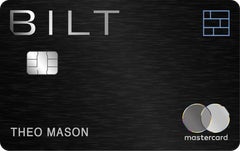Chase Sapphire Reserve® review: Chase’s premier credit card
This premier Chase card could be stellar for travelers who value luxury perks, but its high annual fee makes it a costly choice if you only travel occasionally.
The Bankrate promise
At Bankrate we strive to help you make smarter financial decisions. While we adhere to strict , this post may contain references to products from our partners. Here's an explanation for .
Snapshot
5.0
Bottom line
The Chase Sapphire Reserve stands as one of the best travel credit cards. It has an impressive list of benefits, including a $300 travel credit, complimentary lounge access and one of the most valuable credit card rewards programs. As long as you can take advantage of all it has to offer, frequent travelers should be able to offset the high annual fee and still come out ahead.
BEST FOR FINE DINING
Intro offer
60,000 bonus points
Rewards rate
1x - 10x
Annual fee
$550
Regular APR
20.24% - 28.74% Variable
4.4
Cardholder rating
Extra perks
Online tools
Customer service
Intro APR length
5.0
Bankrate score
Rewards value
APR
Rewards flexibility
Features
Why you'll like this: This card earns exceptionally well on fine dining experiences through Chase Dining and offers solid bonus rates on other travel and dining purchases.
Remove a card to add another to compare
Remove a card to add another to compare
Chase Sapphire Reserve® Overview
The Chase Sapphire Reserve isn’t just one of the best Chase credit cards. Thanks to its exceptional rewards, long list of luxury travel perks and host of travel and consumer protections, the Sapphire Reserve is one of the three major premium travel credit cards.
In head-to-head matchups with the other two stand-out luxury options — The Platinum Card® from American Express and the Capital One Venture X Rewards Credit Card — the Sapphire Reserve does more than just hold its own. Its high earnings and boosted redemption rates through the Chase Travel portal help it to stand out as one of the best travel credit cards.
The Sapphire Reserve is a good fit for frequent travelers who want to elevate their travel experience, especially if you’re looking to earn as much rewards value as possible or you hold other Chase rewards cards. However, the annual fee may not be worth it if the focus on travel and dining reward categories doesn’t match your spending habits and you don’t plan to take full advantage of perks like complimentary lounge access.
-
Rewards
- 10X points on hotel stays, car rentals and Chase Dining purchases through Chase Travel℠, plus on Lyft purchases (through September 30, 2027)
- 5X points on air travel through Chase Travel℠ (after earning your $300 travel credit)
- 3X points on restaurant and general travel purchases (after earning your $300 travel credit)
- 1X points on all other purchases
- Rewards value: 1.5 cents per point when redeemed through Chase Travel℠ (around 2 cents on average through the right transfer partner)
Expert Appraisal: Exceptional
See our expert analysis -
Welcome offer
- 60,000 points after you spend $5,000 in the first three months from account opening.
Expert Appraisal: Good
See our expert analysis -
Rates and fees
- $550 annual fee
- No foreign transaction fees
- No intro APR on purchases
- No intro APR on balance transfers
- 20.24% - 28.74% Variable APR
Expert Appraisal: Unimpressive
See our expert analysis -
Other cardholder perks
- Up to $300 of statement credits on travel purchases each account anniversary year.
- Valuable airport perks including complimentary Priority Pass Select lounge access after enrollment and application fee credits for Global Entry, TSA PreCheck or NEXUS.
- Comprehensive travel insurance, including trip cancellation/interruption insurance, emergency evacuation and transportation coverage, trip delay reimbursement, lost luggage reimbursement and more.
- Complimentary, limited-time credits and/or other partner perks with Lyft, DoorDash, Peloton and GoPuff.
- Potential access to My Chase Plan alternative payment plans with a fixed monthly fee.
Expert Appraisal: Good
See our expert analysis
Chase Sapphire Reserve pros and cons
Pros
-
Comes with some of the highest rewards rates for travel through Chase Travel℠ and dining, plus a 50 percent point value boost when redeemed toward Chase travel.
-
Receive an automatic $300 travel credit each anniversary year, which helps to offset the $550 annual fee.
-
One of the most robust collections of travel protection benefits available.
Cons
-
In addition to the $550 annual fee, there is a $75 annual fee per authorized user — a fee some rival cards don’t charge.
-
Doesn’t offer as many luxury airport lounge and hotel perks as its competitors, although new Chase Sapphire Lounge locations are in development.
-
As with similar elite cards, it isn't the most accessible since you'll need an excellent credit score for the best approval odds.
Why you might want the Chase Sapphire Reserve
The Sapphire Reserve is hard to beat if you want a balance between rewards value and enough luxury travel perks to make your trip smoother. Not only does this card carry some of the most valuable benefits available, but you may be able to rack up some of the best travel rewards value of any credit card.
Rewards: Perhaps the best rewards value available
You may be able to earn exceptional rewards value with the Sapphire Reserve card thanks to its three biggest strengths: a variety of high-rate categories, leading reward redemption values and exceptional synergy with the issuer’s other rewards cards.
While competing travel cards may also reward flights and issuer-booked hotel and rental car reservations, few offer the fantastic rewards rates you can earn through the Chase Travel portal on flights, hotel stays and rental cars (the first $300 of travel purchases are covered by annual travel credits before earning rewards).
The Sapphire Reserve goes the extra mile, though, with its additional reward opportunities that even the Amex Platinum and Capital One Venture X don’t provide. You’ll be able to earn 10X points on Chase Dining purchases (through the Chase Travel portal) and Lyft rides (through March 31, 2025) — perhaps the highest dining and rideshare rewards rates available. However, it’s worth noting you won’t be able to take advantage of Chase Dining at any restaurant of your choice, as not all restaurants participate in the program, and most are based in larger cities like Boston and New York.
You’ll probably get even more use out of the generous 3X points on dining and general travel, which are remarkably versatile considering they aren’t limited to just restaurants or flights and hotels. In fact, these are some of the most comprehensive travel and dining categories on the market.
What’s more, you can get even more value from your rewards through certain redemption options. The Chase Sapphire Reserve earns Chase Ultimate Rewards points, one of the most flexible and valuable credit card rewards on the market. These points are more flexible than typical frequent flyer miles since they can be redeemed for a wide variety of options without losing value, such as gift cards, merchandise (including shopping with points on eligible Amazon and PayPal purchases), travel experiences, cash back or statement credits.
However, one of the main draws of the Sapphire Reserve is that your points receive a 50-percent value boost when redeemed for travel through through Chase Travel℠. Otherwise, your points are worth 1 cent when you redeem for cash back, travel, gift cards and merchandise through the Ultimate Rewards store. Paying with rewards on Amazon.com slightly devalues your rewards to 0.8 cents per point, so you might want to use your rewards another way.
To get the best value for your points, take advantage of the 50 percent boost by booking travel through the Chase Travel portal, where each of your points will be worth 1.5 cents. Or you can transfer your points to Chase travel partners. Based on the latest valuations by Bankrate, the right transfer partner could boost the value of your points to about 2.0 cents per point on average. These options make the Chase Sapphire Reserve one of the best cards for rewards value, and excellent for maximizing your spending with any other Chase rewards card.
Perks: Valuable travel benefits could outweigh the annual fee
As a top-tier travel credit card, you’ll be hard-pressed to find a better collection of travel perks than the Sapphire Reserve benefits. The most notable feature is the up to $300 in annual statement credits on qualifying travel purchases, which can automatically cover anything that falls within your travel bonus category. These credits can offset airfare, hotels, ride-shares, vacation packages and more — which makes this perk more flexible than many rival cards’ travel credits since the credits often just include flights, airline fees or hotels. Just remember: You won’t earn 3X points on general travel purchases until you’ve collected the full $300 travel credit.
Then, you can make up for the remainder of the annual fee with travel perks like the complimentary Priority Pass Select membership (a $299 value) and up to a $120 application fee credit for Global Entry, NEXUS or TSA PreCheck, although this latter perk only applies once every four years. Although these two features are a bit more commonplace among high-tier travel cards, they can go a long way toward expediting your airport entry and making the experience a bit more peaceful.
On the flip side, the Sapphire Reserve card’s limited-time memberships and annual credits with food delivery and rideshare partners like Lyft, DoorDash and GoPuff are valuable perks that many other competing cards don’t carry. However, these usually only last through your first year.
Although they don’t carry a monetary value, the comprehensive roster of travel protections sets the Sapphire Reserve sets itself apart from the crowd. The Sapphire Reserve goes toe to toe with the Amex Platinum as one of the best cards for travel insurance thanks to its coveted trip cancellation/interruption insurance, emergency evacuation and transportation coverage, trip delay reimbursement, lost luggage reimbursement and more. Few cards protect your travel plans like the Sapphire Reserve, and emergency evacuation and transportation coverage is an incredibly rare safeguard.
Why you might want a different travel card
The Sapphire Reserve brings plenty of reward opportunities and valuable perks to the table, but the hefty $550 annual fee, weakened sign-up bonus and limited luxury-grade travel benefits might push some cardholders to alternative cards.
Rates and fees: One of the highest annual fees
Many of the Sapphire Reserve card’s rates and fees are typical of a premium travel card: no foreign transaction fees, no intro APRs and an ongoing APR on par with the current average interest rate. The $550 annual fee is probably one of the most eye-catching aspects of the card, and it might seem intimidating at first glance.
Since the Sapphire Reserve is one of the highest-caliber premium travel rewards cards, its annual fee is similarly one of the highest you’ll find. It sits right in the middle of the top three luxury-level cards, between the Amex Platinum Card ($695 annual fee) and the Capital One Venture X ($395 annual fee - See Rates & Fees).
If you’re concerned about the annual fee, you certainly get what you pay for. The Venture X strips away most luxury perks to be more cost-effective, and the Sapphire Reserve adds more hotel privileges, reward opportunities and partner perks with rideshares and delivery services. The Sapphire Reserve doesn’t have as many annual credits and luxury travel benefits as the Amex Platinum, but the Sapphire Reserve card’s more focused features can be well worth the price tag compared to these other two cards if you’re focused on travel rewards and enough perks to make your frequent travels more comfortable.
However, you’ll also need to look out for the $75 fee each authorized user adds to your account. This may be quite a disadvantage, as there are plenty of travel rewards cards that don’t charge for additional users (such as the Venture X, See Rates & Fees). If you have family members who use the card often, these yearly fees can be worthwhile since their travel and dining purchases could help you rack up points faster. But each user you add increases the fees you owe, which makes it difficult to offset what you’re paying with what you’re earning with rewards. The initial annual fee might be a hard sell if you’re an occasional traveler who isn’t concerned with airport lounges and the like, and the authorized user fee may make the card less affordable in this case.
Welcome offer: Solid bonus but high spend
Chase recently upped its spending requirement for its welcome offer. You'll need to spend $5,000 in your first three months as cardholder to earn the 60,000 bonus points. That's $1,000 more from its previous offer with the same time frame and bonus points.
The spend requirement is a bit high, but this bonus is still valuable. Since the Reserve card boosts the value of your Ultimate Rewards points to 1.5 cents each when you redeem for travel with Chase, this bonus can be worth $900 for Chase travel bookings. You may even be able to get a higher point value with the right transfer partner. Based on Bankrate’s latest point valuations, which give this card’s points a value of 2.0 cents each on average when transferred to a top travel partner, this bonus could be worth about $1,200 or more.
If you’re comparing luxury travel cards and looking for the highest sign-up bonuses available, this card may not be the best fit at the moment. We estimate its bonus value falls short of the value offered by rival cards and even lower-tier premium travel cards. However, long-term value is likely a bigger draw at this caliber of premium travel cards — and is the Sapphire Reserve card’s biggest strength. In fact, the Sapphire Reserve offers one of the better sign-up bonuses available, but it isn’t often the biggest on the market.
Luxury: Not as many hotel and airport perks as rival cards
The Sapphire Reserve is one of the best cards for travel features, but some competitors have a stronger selection of luxury perks when it comes to airports and hotels — or at least a few similar parks for a much lower annual fee, in some cases.
For example, the Sapphire Reserve card’s Priority Pass Select airport lounge access is quite valuable. However, the Venture X also provides Priority Pass Select membership, plus Plaza Premium lounge access, Premier Collection hotel perks (including experience credits) and Hertz President’s Circle® status for rental cars.
The Amex Platinum charges a higher $695 annual fee, but this card provides access to Priority Pass Select lounges (enrollment required), plus access to Plaza Premium, Delta Sky Lounges, Escape Lounges and Select Virgin Clubhouses (lounges are subject to visit limitations) that Sapphire Reserve cardholders don’t have. The Sapphire Reserve also doesn’t offer membership credits for the CLEAR security screening service, which the Amex Platinum and a few other cards carry.
However, it’s worth mentioning that the Amex Platinum is naturally the better choice if you prefer stacks of annual credits, premium hotel perks and airport privileges. The Sapphire Reserve’s card structure focuses on providing higher-caliber rewards over the competition in addition to its solid perk roster.
First-year value vs. ongoing value
The most intimidating aspect of the Chase Sapphire Reserve is its $550 annual fee. You’ll need to take advantage of as many of the card’s features as possible to help offset its yearly cost, but you could earn stellar potential rewards value if you squeeze enough value from the card perks to recoup the fee without relying on your rewards spending.
Maximizing the card’s offers shouldn’t be a problem in the first year. The 60,000-point sign-up bonus alone is worth $900 toward Chase travel, which more than makes up for the annual fee in the first year.
After the first year, it will take a bit more work to ensure the card’s long-term value. But if you’re a frequent traveler, you should have no problem. Benefits like the $300 annual travel credit and complimentary memberships alone can nearly recover the cost, and the card’s rewards program gives you plenty of chances to make up the rest.
Since your points are worth 1.5 cents when redeemed through the Chase Travel program, you would need to spend about $1,019 per month in your 3X-point categories to break even at $550 in rewards. Taking advantage of the higher bonus categories can greatly reduce that spending to just $612 in monthly flights or about $306 per month across hotel stays, car rentals and Chase Dining purchases instead.
To make your research easier, we’ve estimated the Sapphire Reserve card’s first-year and ongoing value based on our card scoring formula, a $22,500 annual spend and a 1.5-cent-per point redemption value (assuming you redeem toward Chase Travel).
| Benefits and Costs | First-year value | Ongoing value (no welcome offers) |
|---|---|---|
| Yearly rewards* | +$722 | +$722 |
| Welcome offers | +$900 value (60,000 bonus points after you spend $5,000 on purchases in the first three months) | — |
| Perks (of monetary value) |
|
|
| Annual fee | -$550 | -$550 |
| Total value | $2,116 | $801 |
We tried it: Here’s what our experts say
Bankrate credit cards writer Ryan Flanigan has used the Chase Sapphire Reserve’s annual credits and perks to his advantage since it launched.
This card is the key to my Chase arsenal. It unlocks extra value when transferring points from my other Chase cards and earns great rates on my frequently used categories. I book all major travel on this card because its trip protections are top-of-the-line and have saved me on multiple occasions. The travel credits offset the annual fee and the added luxury perks make this card a long-term winner for me. I've had this card since it launched and I’ll never leave home without it.
— Ryan Flanigan, Writer, Credit Cards
How the Chase Sapphire Reserve compares to other travel cards
The Sapphire Reserve is a standout option for frequent travelers looking for top-of-the-line perks and rewards value. But depending on your spending habits and the features that matter most to you, it may not be the best option. Here’s a look at how the Sapphire Reserve stacks up against its more cost-effective counterpart and its rival, higher-fee, luxury travel card.

Annual fee
Intro offer
Earn 60,000 bonus points after you spend $5,000 on purchases in the first 3 months from account opening.
Rewards rate
Earn 10x total points on hotels and car rentals when you purchase travel through Chase Travel℠. Earn 5x total points on flights through Chase Travel℠. Earn 3x points on other travel and dining. Earn 1 point per $1 spent on all other purchases.
Recommended Credit Score
A FICO score/credit score is used to represent the creditworthiness of a person and may be one indicator to the credit type you are eligible for. However, credit score alone does not guarantee or imply approval for any financial product.

Annual fee
Intro offer
Earn 100,000 bonus points after you spend $5,000 on purchases in the first 3 months from account opening.
Rewards rate
5x on travel purchased through Chase Travel℠. 3x on dining, select streaming services and online groceries. 2x on all other travel purchases. 1x on all other purchases.
Recommended Credit Score
A FICO score/credit score is used to represent the creditworthiness of a person and may be one indicator to the credit type you are eligible for. However, credit score alone does not guarantee or imply approval for any financial product.

Annual fee
Intro offer
Earn 80,000 Membership Rewards® Points after you spend $8,000 on eligible purchases on your new Card in your first 6 months of Card Membership.
Rewards rate
Earn 5X Membership Rewards® Points for flights booked directly with airlines or with American Express Travel up to $500,000 on these purchases per calendar year and earn 5X Membership Rewards® Points on prepaid hotels booked with American Express Travel.
Recommended Credit Score
A FICO score/credit score is used to represent the creditworthiness of a person and may be one indicator to the credit type you are eligible for. However, credit score alone does not guarantee or imply approval for any financial product.
Best cards to pair with the Chase Sapphire Reserve
The Sapphire Reserve card works best with other Chase credit cards. Since many earn Chase Ultimate Rewards points, they can all be channeled into one pool and redeemed at a higher value with your Sapphire Reserve. In fact, the Sapphire Reserve and several no-annual-fee Chase cards can form some of the best credit card combinations for category diversity and rewards value.
Who is the Chase Sapphire Reserve right for?
Bankrate’s Take — Is the Chase Sapphire Reserve worth it?
As Chase’s premier travel credit card, the Chase Sapphire Reserve delivers the best the issuer has to offer for frequent jet setters. Its rewards on travel, dining and transit set up fantastic reward-earning combos, not to mention luxury travel benefits and top-of-the-line travel protections.
Despite its perks, the card still might not be the best fit for everyone. If you don’t travel much, the $550 annual fee is steep and could be hard to offset if you won’t max out the card’s perks. However, if you do take several trips a year or you’re a fan of the Chase credit card portfolio, this card should definitely be on your list of considerations.
The information about the Chase Freedom Flex® has been collected independently by Bankrate.com. The card details have not been reviewed or approved by the card issuer.
Dig deeper: Is the Chase Sapphire Reserve worth it?
How we rated this card
We rate credit cards using a proprietary card scoring system that ranks each card’s estimated average rewards rate, estimated annual earnings, welcome bonus value, APR, fees, perks and more against those of other cards in its primary category.
Each card feature is assigned a weighting based on how important it is to people looking for a card in a given category. These features are then scored based on how they rank relative to the features on other cards in the category. Based on these calculations, each card receives an overall rating of 1-5 stars (with 5 being the highest possible score and 1 being the lowest).
We analyzed over 150 of the most popular rewards and cash back cards to determine where each stacked up based on their value, cost, benefits and more. Here are some of the key factors that influenced this card’s overall score and how the score influenced our review:
Frequently asked questions
What cardholders think
In May 2024, Bankrate collaborated with third-party SliceMR to survey 6160 cardholders nationwide. Bankrate and Slice MR collected, averaged and presented website analytics and cardholder responses to six questions on a 5-point scale. Responses are based on individual cardholder’s product details, and therefore cannot be verified for accuracy. Users received an incentive for their feedback. User ratings are unedited and have not been reviewed or approved by credit card issuers, nor do these ratings reflect Bankrate’s own reviews of these cards.
Community Reviews
* See the online application for details about terms and conditions for these offers. Every reasonable effort has been made to maintain accurate information. However all credit card information is presented without warranty. After you click on the offer you desire you will be directed to the credit card issuer's web site where you can review the terms and conditions for your selected offer.
Editorial Disclosure: Opinions expressed here are the author's alone, and have not been reviewed or approved by any advertiser. The information, including card rates and fees, is accurate as of the publish date. All products or services are presented without warranty. Check the bank’s website for the most current information.






